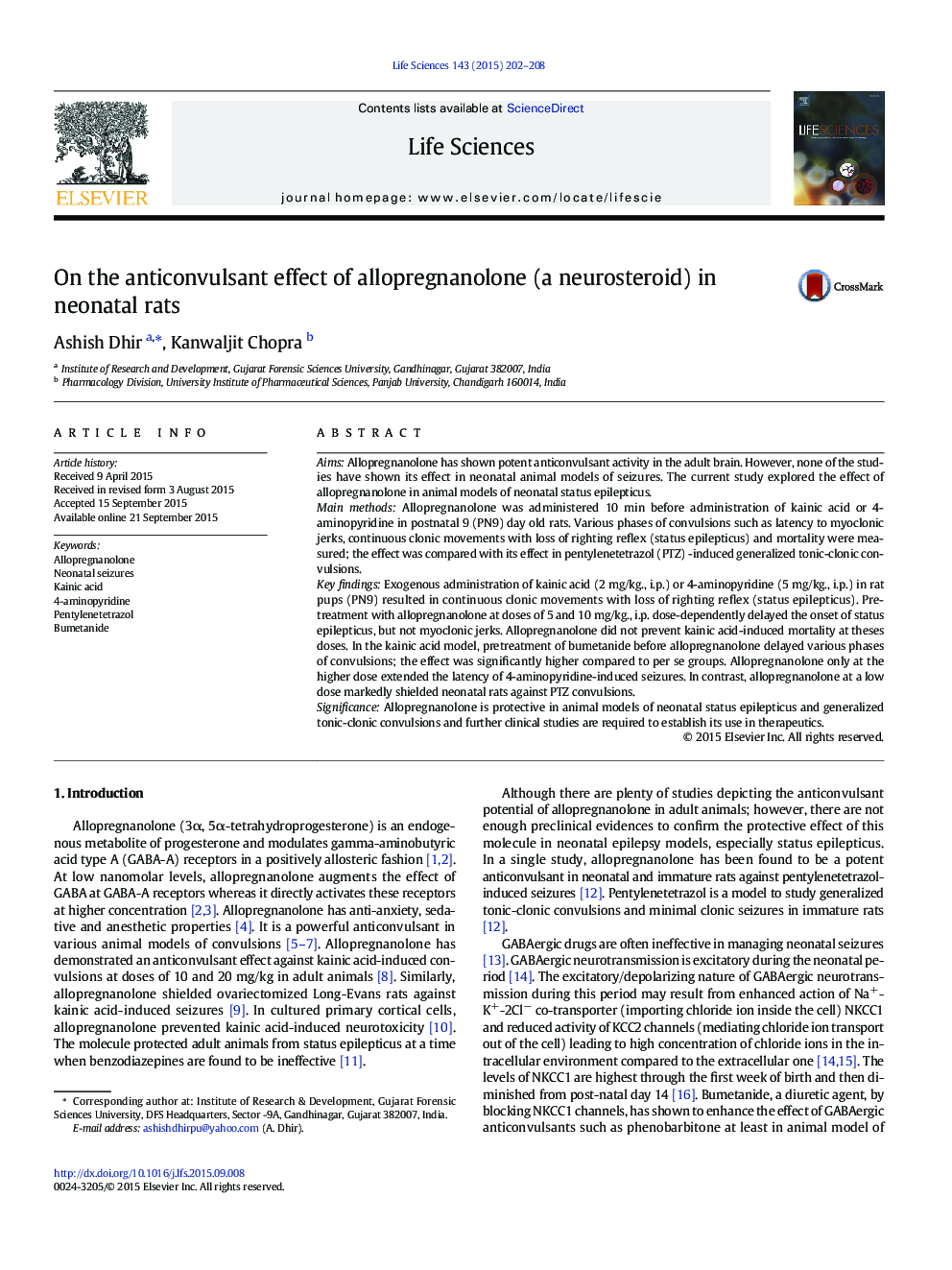| Article ID | Journal | Published Year | Pages | File Type |
|---|---|---|---|---|
| 2550715 | Life Sciences | 2015 | 7 Pages |
AimsAllopregnanolone has shown potent anticonvulsant activity in the adult brain. However, none of the studies have shown its effect in neonatal animal models of seizures. The current study explored the effect of allopregnanolone in animal models of neonatal status epilepticus.Main methodsAllopregnanolone was administered 10 min before administration of kainic acid or 4-aminopyridine in postnatal 9 (PN9) day old rats. Various phases of convulsions such as latency to myoclonic jerks, continuous clonic movements with loss of righting reflex (status epilepticus) and mortality were measured; the effect was compared with its effect in pentylenetetrazol (PTZ) -induced generalized tonic-clonic convulsions.Key findingsExogenous administration of kainic acid (2 mg/kg., i.p.) or 4-aminopyridine (5 mg/kg., i.p.) in rat pups (PN9) resulted in continuous clonic movements with loss of righting reflex (status epilepticus). Pre-treatment with allopregnanolone at doses of 5 and 10 mg/kg., i.p. dose-dependently delayed the onset of status epilepticus, but not myoclonic jerks. Allopregnanolone did not prevent kainic acid-induced mortality at theses doses. In the kainic acid model, pretreatment of bumetanide before allopregnanolone delayed various phases of convulsions; the effect was significantly higher compared to per se groups. Allopregnanolone only at the higher dose extended the latency of 4-aminopyridine-induced seizures. In contrast, allopregnanolone at a low dose markedly shielded neonatal rats against PTZ convulsions.SignificanceAllopregnanolone is protective in animal models of neonatal status epilepticus and generalized tonic-clonic convulsions and further clinical studies are required to establish its use in therapeutics.
